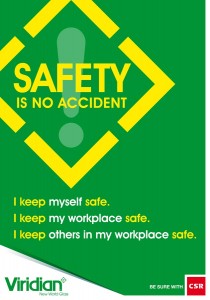
So your company has finally decided to systemise your safety induction training and you're in charge of sorting it all out.
 Many safety professionals believe they need to reward staff to get them to behave safely.
Many safety professionals believe they need to reward staff to get them to behave safely.
But we all know, that rewarding staff doesn't always work. You often get great safety performance when rewards are on offer, but once the rewards stop, the safety behaviour drops back down to the previous level (or lower).
In the book, Drive, by Daniel Pink he goes through a lot of research studies to discover when it's best to reward staff.
Most business managers know that goals are an important business tool as they focus the mind on undertaking a particular objective. They help get things done. But care needs to be taken with what you get people to focus on.
When offered a reward on completion of a task, staff tend to focus on the reward, resulting in poor performance when undertaking the task. Offering a reward for performance encourages short-term thinking, cheating and unethical behaviour. I'm sure many of you have experienced working for a company offering a financial or a gift card reward for safety which resulted in incidents being omitted from the monthly statistics.
Other examples include Enron who set such lofty revenue goals that staff undertook risky, unethical sales behaviour that led to the company's demise. While Ford released the Ford Pinto with a focus on producing a car on a certain date with a certain weight and price that it omitted important safety checks and unleashed an incredibly dangerous car (self-exploding vehicle, anyone?).
If you pay people to lose weight, work harder or stop smoking, people will start doing the new behaviour that is required. But once they get their reward, they don't continue. Money in itself isn't a big motivator for improving performance or stopping an unhealthy habit.
However, it's different for left-brain routine tasks, that do not require creative thinking. Research has found that rewards can actually boost productivity without harmful side effects provided that the work is monotonous. Examples include production line work (or putting letters into an envelope).
But for creative tasks, rewards actually decrease performance.
Pink says that if you do want to reward a design team for doing a good job, you must give them a reward after the task is done and it should be unexpected.
This is to ensure that staff focus on solving the problem, rather than the reward.
When it comes to enhancing performance and motivating staff - the best reward is positive feedback. It might seem a bit "twee", but we all like to hear we are doing a good job. And we're not likely to cheat or exhibit unethical behaviour, just to hear our boss give us a good rap.
So long as the feedback provides useful information. Rather than saying "Wow. You designed a great safety poster". Instead, give meaningful and specific information about how the poster met the objectives such as " Wow. That poster you designed really hits the mark. It clearly communicates how to walk down stairs correctly".
If you have a new safety initiative that you need to communicate to staff and you know that there will be some resistance, use the following four steps to communicate and reward:


So your company has finally decided to systemise your safety induction training and you're in charge of sorting it all out.
As mentioned in " How to Develop a Workplace Safety Messages Campaign" Part 1, marketing is the key to getting your safety messages heard and understood.